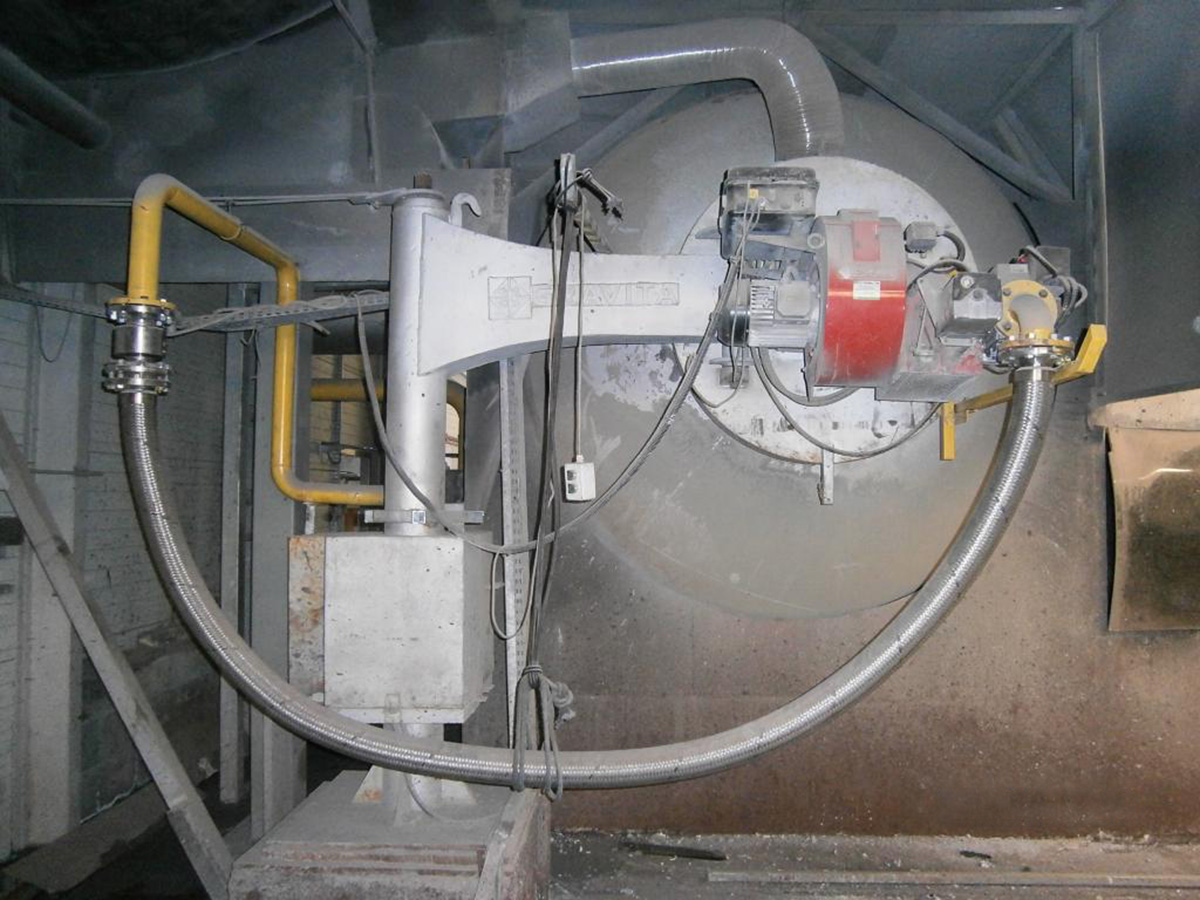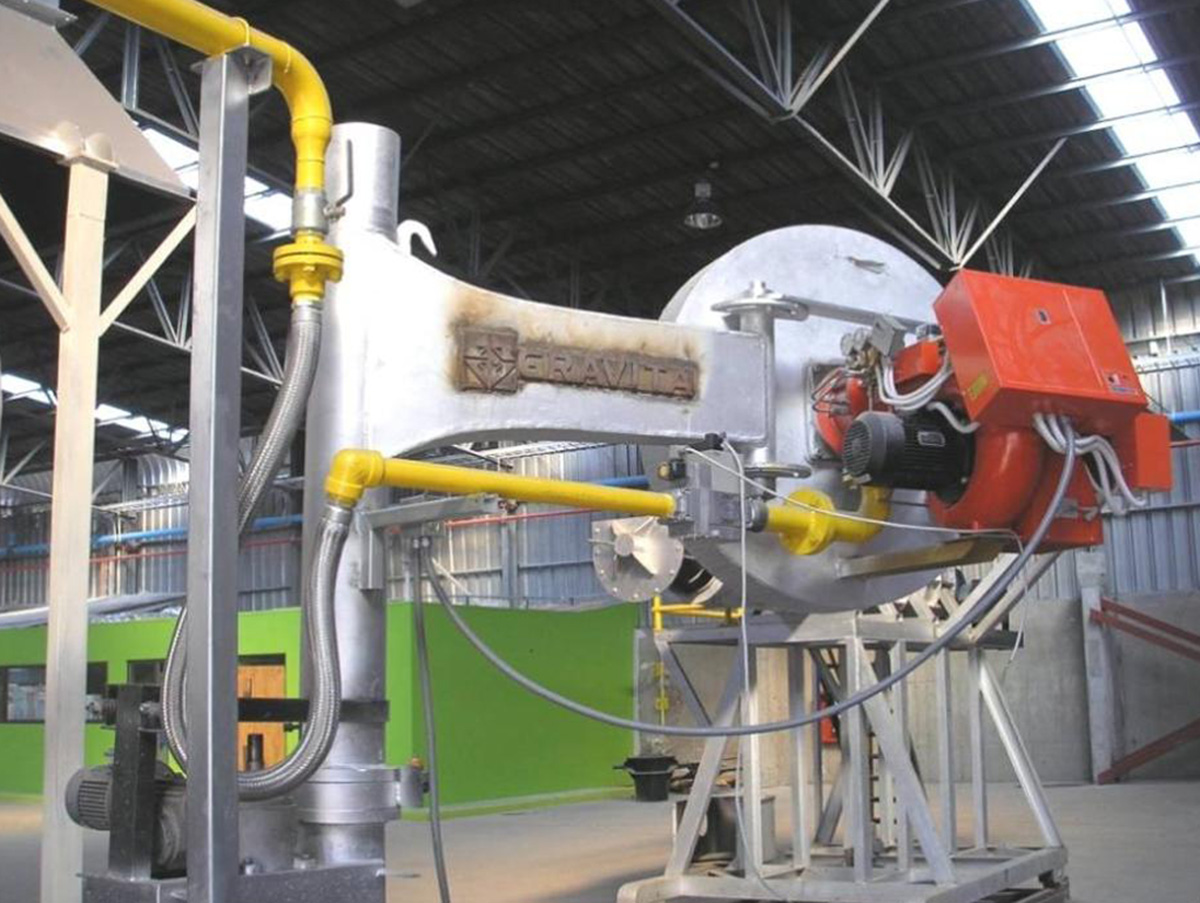Challenge
Whenever we deal with a gas installation we take special care to provide a reliable and safe solution. This time we had to connect a rigid pipe supplying gas with a steel hose assembly feeding a gas burner fitted on the revolving door of a blast furnace. It seemed to be quite easy, however if the door opened the hose started to twist. Unfortunately this motion led to twisting – a destructive kind of motion.
Solution
To get rid of these twists, we decided to install a rotary union.
A rotary joint is intended to connect a stationary unit ( in our case, gas supply pipe) and a moving unit ( hose assembly) allowing free flow and rotation at the same time. It basically comprises four basic components: a housing, a shaft, a bushing and seals. The housing has a threaded inlet at one end, the other end holds a shaft with a threaded end connection as well. The bushing and seal are assembled around the shaft. The bushing is used to allow the shaft to rotate and thus makes the most important part of the rotary union for natural gas. The seal prevents the medium from leaking outside the rotating union. Threaded ports at both ends of the rotary joint facilitate connection.
The rotary joint for natural gas of our selection was assembled with stainless steel flanges DN80 PN16 and secured with PTFE seals. It was mounted between a rigid gas supplying pipe and a corrugated steel hose DN80. The steel hose fitted with the rotary joint made an assembly of unconstrained flexibility. It could easily swivel when the door with the burner was either opened or closed.
Result
Sometimes small things can make a really big difference. It proved to be true this time. Thanks to the natural gas rotary union with flanges, the steel hose does not twist anymore and is much easier to handle. What is more, the flow rates are not reduced at all. Gas is carried through the straight passage of the shaft in the rotary union, then it flows undisturbed through the hose down to the burner. The rotary union for natural gas significantly increases the hose service life as it stops twisting and reduces stress. What we needed was free motion, reliability and safety – a rotary joint has it all!
Your hose expert


